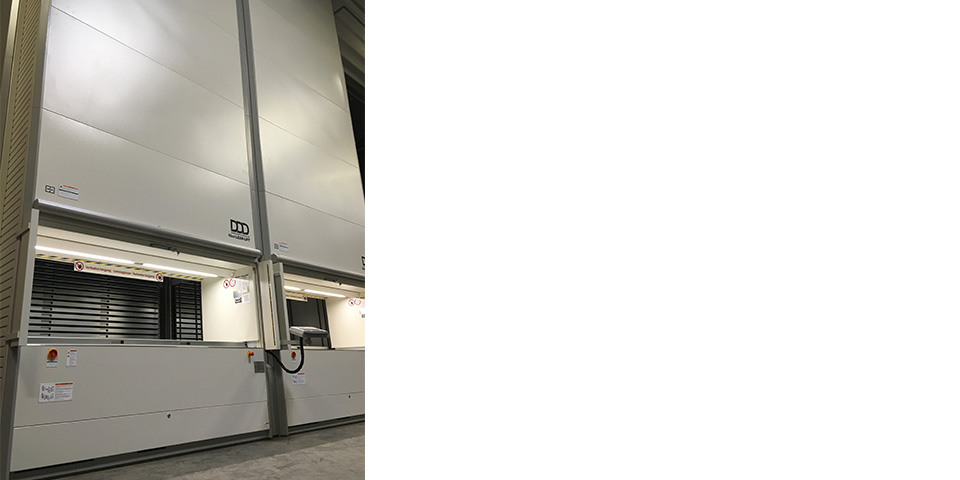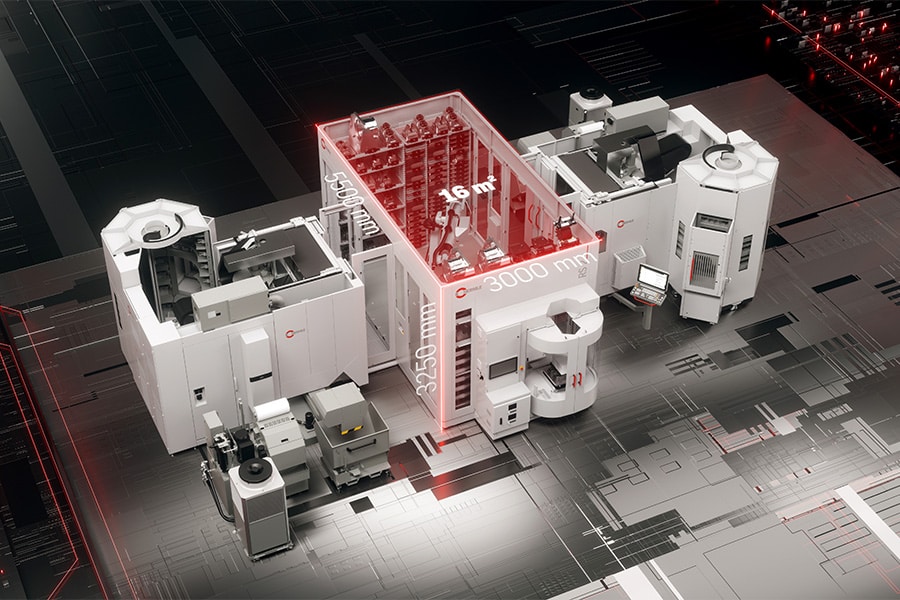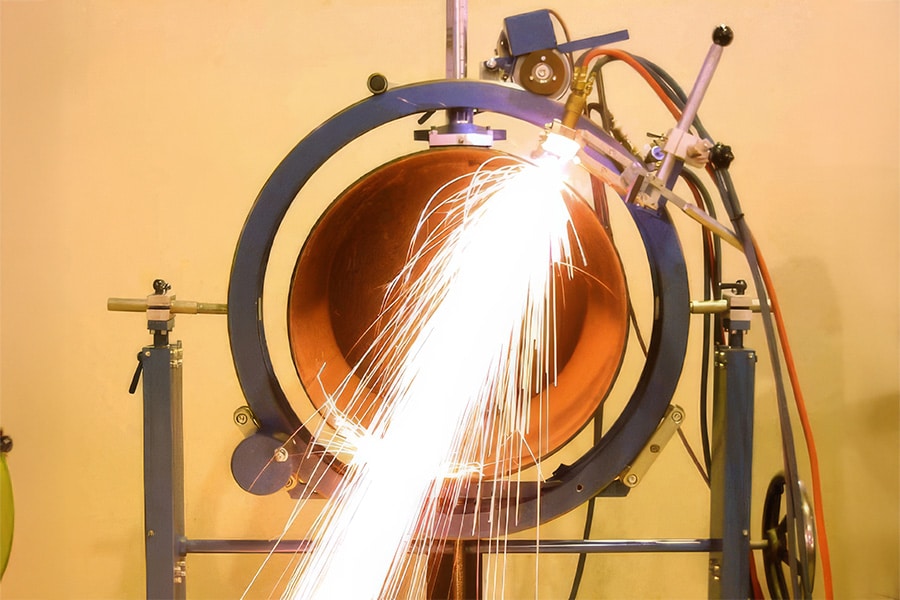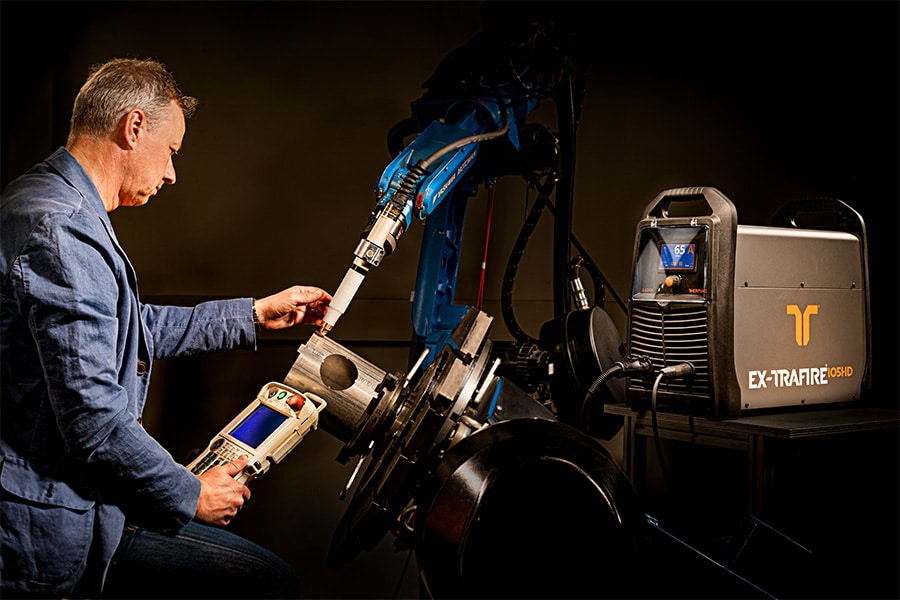
How valuable is an efficiently organized warehouse?
The warehouse occupies a key position in every business process, whether for a small sole proprietorship, an SME or a multinational, especially in the metalworking sector. After all, a good, efficiently organized warehouse significantly increases productivity, ensures cost savings and prevents a lot of employee annoyance. Drawing up a good step-by-step plan and making correct material choices when setting up a warehouse is therefore no superfluous luxury.
Good productivity starts with efficiency in the production hall. Over the years, business leaders have come to realize, that the way raw materials, semi-finished and finished products are stored can play a crucial role in the success of their business. Companies that go about their warehouse layout too easily may be surprised, as it can lead to extra handling, annoyance or unsafe situations. So setting up a warehouse efficiently is no easy task and it is best to take a number of aspects into account. If you think carefully in advance about what products will be stored and under what conditions, how much stock you need of those products, what a logical layout would be to have a good inventory management and what the best picking and walking routes are, then there is a greater chance that your warehouse will be arranged in an efficient way. After all, based on all these aspects, you can create a concrete layout plan with racks, platforms, warehouse elevators ...

Pallet racks are space-saving. Moreover, you can choose from a wide range of pallets made of wood, plastic, metal or even cardboard." (Image: Wilco van Dijen)
A suitable storage system for every application
If you are renovating an existing warehouse, you might want to start by tidying up. Not the nicest job, but a messy warehouse causes loss of time and reduced productivity, as well as annoyance and accidents among employees. There are several methods that can help you with this: the 5S method (separate, sort, clean, systematize or standardize and maintain), but there are many alternative ways. For metalworkers, a wide range of storage systems is possible. They should first choose between a manual, semi- or fully automatic system. Warehouse space is valuable anyway, so it is important to use every m³ as efficiently as possible. Volume, weight and type of goods determine which equipment to use. There are countless possibilities, from which we highlight a few in this article: shelving or (high bay) warehouses, mezzanine floors and platform or warehouse elevators.
Theses
Versatile warehouse racking systems are available for storing small goods, bulky goods and pallets. It is impossible to imagine internal logistics without pallet racking. They save space and you can use different types of pallets: wood, plastic, metal ... Of course, there are many other types of racking available: cantilever racking for elongated materials, shelf racking for half-heavy, large items, flow racks, which work according to the first in, first out (FIFO) principle, and much more. These racks can be expanded into an automated high-bay warehouse or a channel warehouse, in which several storage units are placed one after the other in channels and the goods are stored and taken out using so-called shuttles. For some applications, for example for metal sheets, tubes and profiles, systems with roll-out drawers are more suitable. Here the goods are completely outside the rack and can thus be easily picked up and transported manually or directly with the loading crane or bridge. For the orderly arrangement of these racks, you can use a wide range of carriers. So there are various bins and crates, which today consist mainly of high-quality and durable plastics: stacking bins in euro format, folding, collapsible and nestable solutions ... Sometimes these are special bins for critical parts, for example for elements with a surface treatment that is best not in contact with each other.

Plate lift systems and warehouse elevators make maximum use of the available height of the space. They automatically bring the requested item to the work opening within seconds.
Flooring
A mezzanine floor, also called a mezzanine, platform, tiered floor or mezzanine floor, doubles the area of space in one fell swoop and is used for a variety of applications. Some firms want a platform floor that is enclosed to store products safely and under lock and key, but is also demountable to put back up somewhere else. Other firms want a platform to use it as an additional space for canteen, archive, even office or meeting space. For racking systems with mezzanine floors, platform aisles can be built in between the racks or even complete floors can be mounted on the racks.
Automated platform and warehouse elevators
The paternoster system dates back to the 1950s. These warehouse elevators, along with platform elevators, are still a common solution for making maximum use of available height and storing parts optimally without losing space in height. A warehouse elevator uses carrier sets, while the platform lift systems are equipped with several platforms for storing goods. Both solutions automatically bring the retrieved item to the work opening within seconds, where it can be taken out at an ergonomic height by the operator. They can be used as stand-alone units, but the warehouse can also be enlarged incrementally with more modules, even combined over several floors.
A well-appointed warehouse is never finished
There are other factors involved in the efficient use of a warehouse. For example, it is important to manage inventory smartly through warehouse management software (wms) or through the kanban method, where inventory is replenished just-in-time based on demand. Well thought-out walking and picking routes and the selection of the right conveyor systems save warehouse workers a lot of unnecessary mileage, and color coding clearly indicates the function of an area, spot or product. However, it should be clear that an efficiently designed warehouse is never finished. It comes down to always listening carefully to the people on the shop floor. For example, in recent years there has been a trend toward modular solutions, where the storage system can grow with the company and space-saving containers are often chosen.



